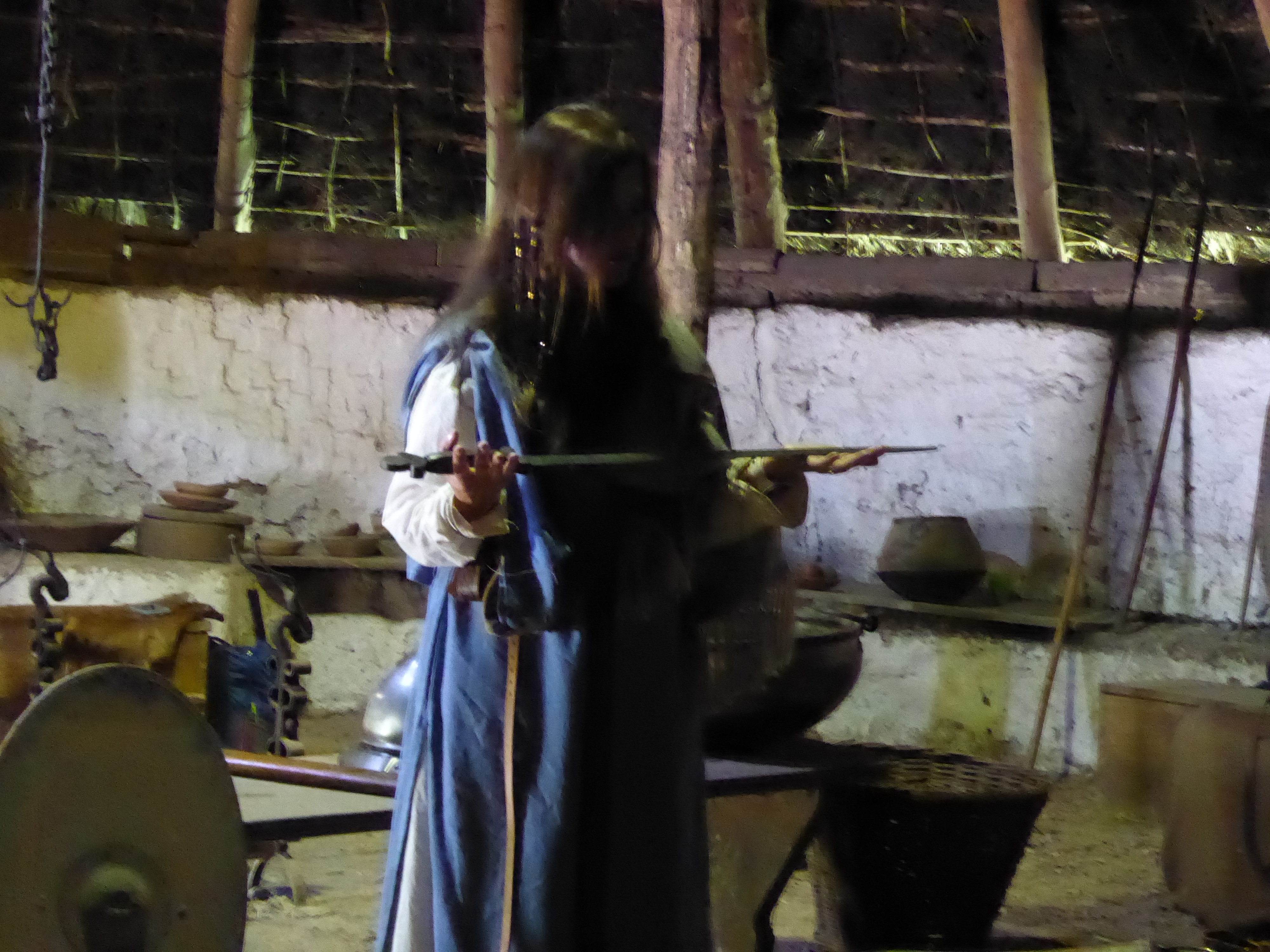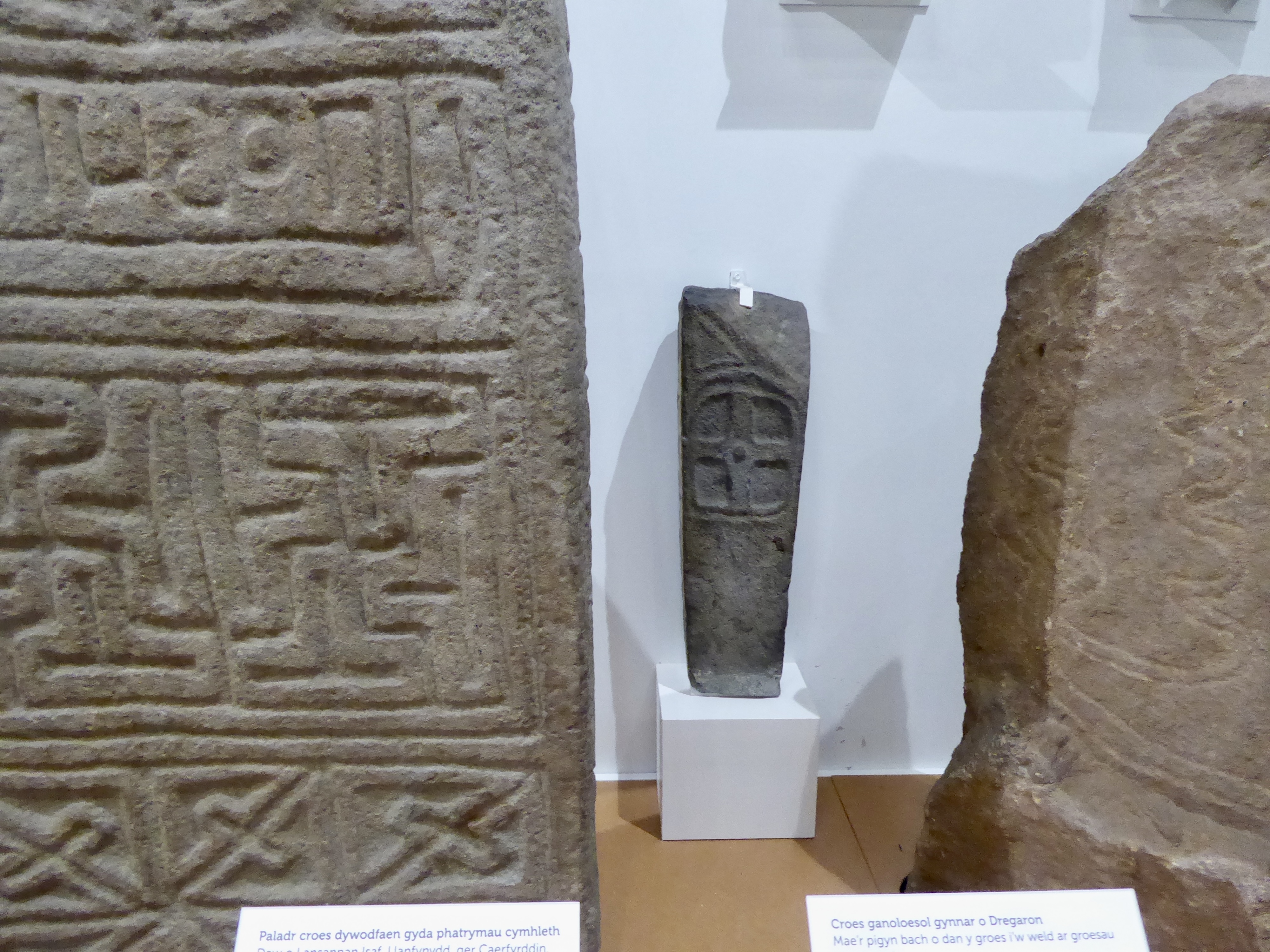
Celtic Life in the Iron Age
We visited the Museum of Wales at St Fagans. It is a wonderful place of reconstructing life in Wales through the ages, including an Iron Age round house similar to one lived in by a wealthy Celtic clan.
I wanted to learn more about the people the Christian monks came to evangelise and their culture. I discovered they were far less primitive than I had imagined with a clear clan structure overseen by the King who deferred to the chief Druid. It was a pagan culture with worship of water, sun and moon. Regular sacrifices occurred including offering metal items, horses who were thought particularly sacred but also humans.
The round house was well constructed and depending on where in the country local materials were used: wood, clay, horse hair, mud, dung and stone. The roof was of wooden poles interspersed with a double woven layer of thatch. Whilst the Celts made no written records, both the Greeks and Romans did write about them. But because they were a conquered race and the conquerors wanted to look good, archaeologists have discovered that much of what is written is lies. In fact, the Celts were far more civilised than suggested and artefacts which have been found back this up.
As mentioned horses were revered and a horse skull was often buried at the entrance to a round house. A fire with fire irons was positioned centrally but with no chimney so a layer of smoke would form a ceiling. It’s thought this was to prevent the roof catching fire and to keep pests out but it must have been acrid to live with. They farmed primarily and kept livestock for meat and had milk and cheese. Apparently they loved to be adorned both with makeup and jewellery. Gold torcs for wearing around the neck to show status have been unearthed and other jewellery. Every part of an animal was used including the skin and bone, but their clothes were of homespun woven cloth. For defence most people would have an iron spear but swords were for the extremely wealthy as the process of extracting iron and forging it included up to a hundred people. This greatly surprised me. They also appear to have slept on raised beds possibly with a canopy to prevent twigs and insects from the roofs falling on them. Food was cooked over the central fire which had elaborate fire dogs to suspend pots but also stones which heated and could be cooked on. Families lived together but there is evidence of some partitioning within the house and the reconstructed one had two linked round rooms forming a figure of eight, the smaller holding a bread oven, loom, grinding stone and other implements.
So when the monks walked the lands they would have encountered these Kings and druids, often seeking their patronage or covering such as Samson at Golant in Cornwall living adjacent to the court of King Mark.
This is only a very short over view and not meant to be an historical discourse merely a glimpse into the Celtic way of life.





The bell shown above is the type the monks carried to announce their whereabouts for confession and prayer. The carved stones show Christian symbolism from the Celtic period.